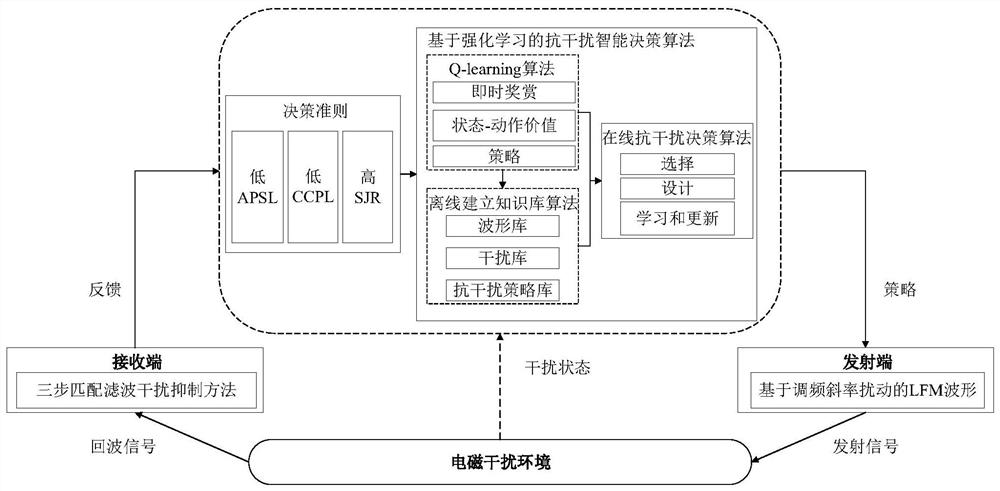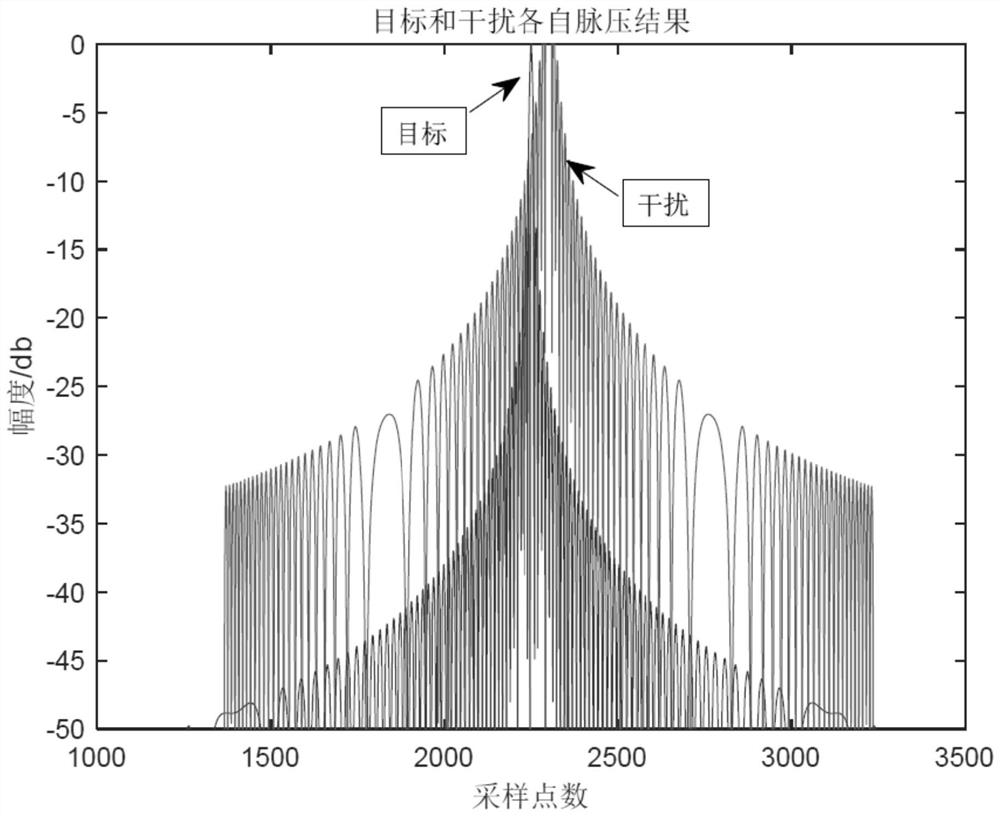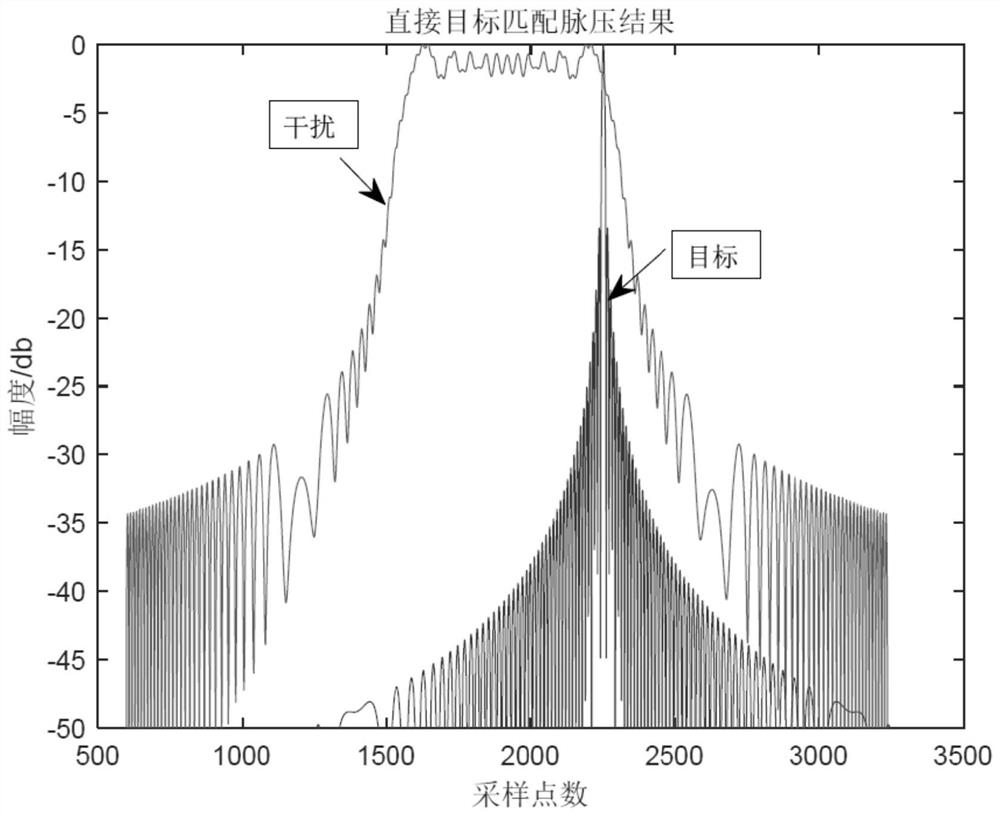Radar anti-interference intelligent decision-making method based on reinforcement learning
An intelligent decision-making and reinforcement learning technology, applied in radio wave measurement systems, instruments, etc., can solve the problems of single LFM waveform design method and cannot deal with complex interference scenarios, and achieve low decision-making time, interference suppression, and high decision-making accuracy. Effect
- Summary
- Abstract
- Description
- Claims
- Application Information
AI Technical Summary
Problems solved by technology
Method used
Image
Examples
specific Embodiment approach 1
[0069] Specific implementation mode 1. Combination figure 1 As shown, the present invention provides a radar anti-jamming intelligent decision-making method based on reinforcement learning, including,
[0070] For each confrontation round between the radar and the jammer, the radar transmitting end transmits the LFM waveform based on the frequency modulation slope disturbance to the electromagnetic interference environment, and the radar receiving end receives the echo signal from the electromagnetic interference environment; the echo signal includes Target echo signal and interference echo signal;
[0071] A three-step matched filter interference suppression method is used for the echo signal to achieve the effect of distinguishing the target from the interference and obtain the target echo signal;
[0072] According to the waveform performance of the transmitted LFM waveform and the anti-jamming performance of the receiving end after interference suppression, the radar anti...
specific Embodiment 1
[0168] Using the direct target matched filtering method as method 0 and the three-step matched filtering based interference suppression method designed by the present invention to process the simulation data, and compare the interference suppression effect.
[0169] The simulation parameters are set as follows:
[0170] The radar transmits an LFM signal based on frequency modulation slope disturbance. The pulse width of the reference signal is 90μs, the bandwidth is 5MHz, and the frequency modulation slope is The 30μs sampling rate is 70MHz, and the target distance is 3km from the radar. The jammer implements distance false target deception jamming, and continuously retransmits the radar intercepted signal of the previous pulse repetition period. A false target distance deception jamming delay is 1 μs, and the jamming limit threshold is the maximum value after the pulse compression of the target signal.
[0171] Jamming Scenario 1 Setting: Deceptive jamming only forwards the...
specific Embodiment 2
[0174] Using the frequency modulation slope random disturbance method (method 1) and the intelligent decision-making method based on Q-learning designed by the present invention (method 2) to process the simulation data, and compare the anti-jamming decision-making effects.
[0175] The simulation parameters are set as follows:
[0176] The same simulation parameters as in Embodiment 1 are used. Taking the pulse signal of two LFM waveforms continuously transmitted as an example, they are recorded as waveform 1 and waveform 2 in turn, and the value ranges of the frequency modulation slopes are respectively Take 26 frequency points at equal intervals in the value range to form the radar action space, so the radar action set contains 26×26=676 actions in total. Setting Reinforcement Learning Parameters: Thresholds in the Reward Function¶ 1 = -13.5dB, γ 2 =-17dB, γ 3 = 20dB; the weight ω in the reward function 1 = 1, ω 2 = 1, ω 3 =1 / 6; greedy probability ε=0.1; learning ra...
PUM
 Login to View More
Login to View More Abstract
Description
Claims
Application Information
 Login to View More
Login to View More - R&D
- Intellectual Property
- Life Sciences
- Materials
- Tech Scout
- Unparalleled Data Quality
- Higher Quality Content
- 60% Fewer Hallucinations
Browse by: Latest US Patents, China's latest patents, Technical Efficacy Thesaurus, Application Domain, Technology Topic, Popular Technical Reports.
© 2025 PatSnap. All rights reserved.Legal|Privacy policy|Modern Slavery Act Transparency Statement|Sitemap|About US| Contact US: help@patsnap.com



